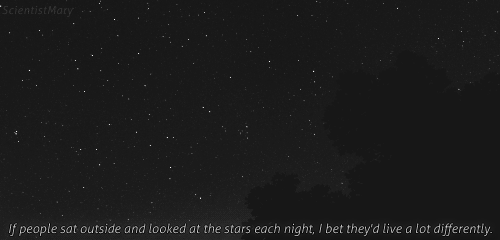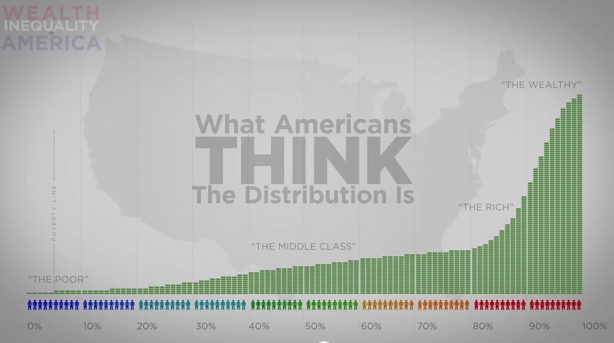It’s easy to forget that we have access to a virtually limitless resource of information, i.e. the Internet. For a lot of us, this is even true at our fingertips, thanks to the ubiquity of smartphones and an ever-increasing push for online greatness by tech engineers all over the world.
As a result, there are countless websites out there that are geared to make you smarter and more brilliant for either a low or no cost. Here are just 25 such sites that may just make you more clever than ever before.
This isn’t the first time I’ve recommended this language-teaching website (and app), and it certainly won’t be the last. Duolingo is a free version of Rosetta-Stone that delivers the same results: teaching you another language. Regular use of the site can have you speaking and writing Spanish, English, German, French, Portuguese and Italian in a matter of months depending on the diligence you put into it. Hopefully, even more languages will become available soon.

Have you ever wanted to pick up a subject you’re not well-versed in, but you didn’t have the money to invest in a college course? Khan Academy aims to provide education at the collegiate level for anyone who wants it. They provide resources for learning pretty much every subject out there, including math, science, history and more. As you learn, the platform will even assess your progress and help you gauge what you’ve learned.

Guitar is one of the few instruments out there that’s actually pretty easy to learn if you’re a little older, making it one of the most accessible instruments. Still, learning how to play still takes some direction, at least for most people, so a guy named Justin decided he was going to help out. His website provides hundreds of free guitar lessons that range in different styles, depending on how you want to play. His schedule for learning is pretty easy to follow, and the site is a great stepping stone for people wanting to pick the instrument up.

Founded by Michael Chu, Cooking for Engineers goes further than just providing recipes. The site is a blog that is geared toward making your food taste good. Additionally, his analytical take on ingredients and cooking recipes is interesting and will likely change the way you approach cuisine.

Or Nick the Dating Specialist is a website that wants to help guys be better dates. The site is full of advice on how to approach social situations and flirt successfully with different types of people. Nick even offers personal coaching at your request, so he can help your specific situation or hurdle to successful dating.

When we think of exercising and gym techniques, we typically think of bodybuilders and jocks from high school. Nerd Fitness aims to provide resources for getting in shape from a nerd’s point of view. All of the guides, blogs and fitness tips on this site have a geek flavor that is intended to make anyone who feels uncomfortable at the gym feel right at home here.

As much as I would love an education at MIT, that isn’t really in the cards. Thankfully, the educators at the Massachusetts Institue of Technology decided to give out information for tons of courses online through Open Courseware. Hundreds of millions of people have benefitted from the information that they can learn from these courses, starting a trend for other sites to offer free courses as well.

I don’t like to admit it, but my lack of a business degree tends to make me feel easily intimidated when a conversation starts taking a turn for the financial. To solve this, Investopedia was born to provide a news blog that makes it easy to digest and really understand the financial markets. There are tons of resources like tutorials and videos that will help you keep up with the ever-changing world of money, and the news stories will keep you coming back for more.

Have you ever wanted to ask someone famous a question, but you suffer from never having the chance? Thanks to Quora, you can read the opinions and answers of fascinating (and varied) questions from the leading experts in pretty much everything. You can answer questions too and get feedback from numerous others who share your love for a given topic.

I love reading, but sometimes a visual demonstration just makes information come alive. Hence, Information is Beautiful is a platform that uses gorgeous visuals to impart data. For example, if you want to find out how much money individual organizations have lost from data breaches, you can view an action visual that shows bubbles that are labeled and sized accordingly, giving you an in-depth, but easy to digest overview of the data.

According to Spreeder, a lot of us have trouble reading quickly because we can only read as fast as our “inner voice” can. Spreeder’s solution is to teach you to read without an inner voice, boosting reading speed and comprehension immensely. The best part? It’s totally free.

Imagine a library with tons of free books that you can keep for the rest of your life. Actually, you don’t have to imagine that because Project Gutenberg gives you the ability to download thousands of free e-books, and it’s completely legal.

If you haven’t noticed by now, the Internet has pretty much taken over everything, which means the skill of coding and developing websites is in higher demand than ever, and that’s not likely to change. With Codeacademy, you can use free tutorials that teach you the basics of coding with interactive and handy tools for helping you become an expert.

Imagine if Google Earth and Wikipedia decided to make it official and have a child. That would be GeographyIQ. Using the world map, you can select any country and access virtually every facet of useful information there is about that country, including history, currency, population and more.

It’s no secret that the key to memorizing information is mastering recall. With flashcards, you can recall things faster, making Anki an ideal resource for using flashcards online. Unlike other sites that use flashcards, Anki allows you embed more than just text. You can use video, audio and images to help you start studying faster and smarter.

Using games to learn is something I’ve treasured since Kindergarten, making Lumosity a trusted resource for me and countless others. Using a daily schedule of games, Lumosity is literally designed to make you more clever. As you progress, the software figures out what your strengths and weaknesses (such as memory or math skills) and assigns you games accordingly. The best part is that the games are actually addicting and fun to look forward to!

Ideal for high school and college students, Cliffsnotes provides valuable resources like study guides and test prep for standard books and subjects you’ll have to read anyway. The site also provides resources for math and science, giving you the chance to finally master the dark arts of homework.

For years, people have been benefitting from TED talks that provide free insights from the world’s smartest people. TED provides the value and learning growth of a seminar, but without the exorbitant costs and travel expenses, by providing visitors with tons of free video lectures. The app is also great for catching up on the latest talks, and you can even download some on iTunes.

Need to memorize a lengthy number? Pinfruit analyzes the number and provides all of the options you could want as a mnemonic device. That’s all there is to it, since (unfortunately) they only provide this for numbers and not words.

There are countless blogs that you can enjoy for being interesting and mildly useful, but how many of them actually help you with your career? Mindtools is a blog that teaches you what they call “practical career skills” that you can apply at your job. This is a great daily read for entry-level workers who want to make a great impression, and the variety of topics and advice provided make this is a fantastic bookmark for anyone wanting to excel.

Want to take your coding skills to the next level? Learn Street helps teach you how to use advanced coding scripts such as JavaScript, Python and Ruby without making your head explode. It even provides a service for helping you teach advanced code to others.

There are things we want to know about, and then there are things we didn’t know we wanted to know about. HowStuffWorks addresses the latter by providing information on a variety of topics and eye-opening facts that will broaden your horizons.

Finding a great dictionary is not a difficult task in a world full of search engines, but it can be tricky to define more complicated words and phrases that most dictionaries (besides UrbanDictionary) don’t attempt to define. With OneLook, you can find multiple definitions from numerous dictionaries in one place, even if you’re looking up a phrase that is obscure or too specific for normal dictionaries to help you out with.

Did you know that the CIA has information on pretty much everything in the world? Okay, but did you know that they make a ton of this information open to the public? The World Factbook is your godsend for research, allowing you to cite facts and details that pertain to a seemingly endless amount of information from reputable sources.

Don’t let the name fool you, as Couchsurfing is far from a website that will make you lazy. Couchsurfing lets you connect with travelers all over the world and is the ultimate resource for experiencing other cultures. Put simply, you can use the social network to meet locals in a new community you are visiting. You can also open up your home to fellow couchsurfers, giving you the chance to make new experiences and memories with fascinating people from all over the globe.

Sure you'll be interested in this too: 15 Websites That Make Your Time Spent On The Internet Productive
The post 25 Killer Websites that Make You Cleverer appeared first on Lifehack.
 Genau diese „geheimen Algorithmen“ hatten vor ein paar Monaten dafür gesorgt, dass Wissenschaftler im High Frequency Trading eine Art künstliches „AI-Ökosystem“ ausmachen, in dem es sowas wie „Raub-Algorithmen“ gibt. Extrem interessant, alles und das Dark Pools-Buch hab’ ich grade auf meinen Kindle geladen.
Genau diese „geheimen Algorithmen“ hatten vor ein paar Monaten dafür gesorgt, dass Wissenschaftler im High Frequency Trading eine Art künstliches „AI-Ökosystem“ ausmachen, in dem es sowas wie „Raub-Algorithmen“ gibt. Extrem interessant, alles und das Dark Pools-Buch hab’ ich grade auf meinen Kindle geladen.






















































